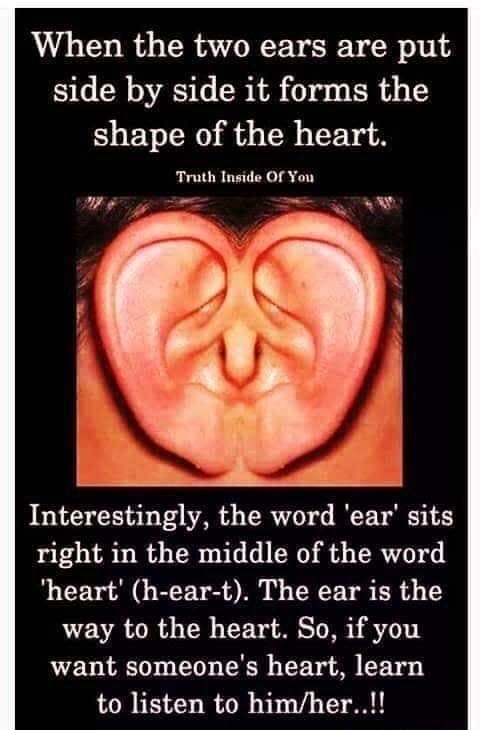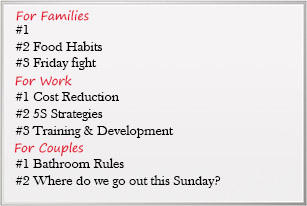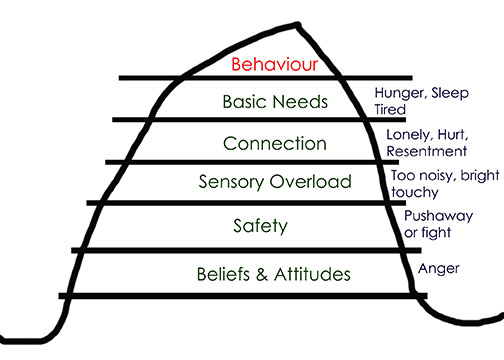When you truly want to fix a problem between two parties or multi parties the solution is communication.
For communication to be authentic, the parties involved must respect each other as equals and comprehend the words with empathy.
Empathy creates a connection that is the core of any truly resolved problem.
Problem Solving is a skill needed in all the roles we play in life. It could be in our personal and marital relationships, as parents of young children or children of aged parents, and even in our workspaces.
The human need to connect, be seen, understood, and belong is universal in all walks of life. Honoring that need is the basis of connection, cooperation, and ultimately peace.
Today we will talk about problem solving in three particular areas :
- Parents of School Going to Teen kids
- Workplace
- Personal Relationships
Before we get into Problem Solving let’s see the 4 skills essential to successful problem-solving.
4 Skills For Problem Solving
1. Active Listening (Empathy)

Active listening is when your usually cheerful kid or partner comes back home with a long face and slouched body and you say :
” Looks like you had a rough day buddy, let’s have a cup of cocoa/tea and talk about it”.
And when they do say – you listen with all your attention and describe what they must be feeling. Validate and support those feelings.
” Oh, thats seems tough! “
” I understand, my darling – that must have made you so mad!”
” That is a terrible feeling my dear….”
And the same goes for positive & happy news! When your kid comes bounding up & down to tell you about a recent victory – your level of enthusiasm in your response will make him/her feel seen or not seen.
For more information on how to actively listen and respond please read the article: What is the Key To Happy Relationships?
Active Listening is the key step to empathy. You need to truly listen to another to understand how they are feeling.
2. Perspective Taking (Keeping An Open Mind)
Another skill pertinent for problem-solving is cognitive empathy or understanding another’s point of view.
Putting yourself in another’s shoes and being open to immerse yourself in their world unlocks your mind to new perspectives. This is a valuable skill to understand the situation as to how your partner, co-worker, or family member sees it and maybe challenging your own belief or mindset.
To know more about the idea please read the article: The Art & Craft Of Conversation
3. Being Respectful (I Statements)
In a conversation, tone of voice is everything. When the people accept each other as equals in a conversation, what is said is accepted with understanding.
In such a setting, when you want to discuss an issue you have with someone it helps to lead with the ‘I statements’.
For example:
” I feel very angry when you do not finish your chores.”
” I would like it better if you can be an active listener and support me when I feel low.”
“I feel very tired doing so much cleaning in the house and would like some help.”
These statements refrain from pointing fingers and putting blame and shame on others. You are not assuming anything, just stating what it is to you and looking for a viable solution to your upsetting feelings.
4. Being Creative (Bricolage)
Issuing consequences is an age-old system to ‘discipline’ a child. But where consequences are one solution, problem-solving is many.
Using your joint creativity to find tailor-made creative solutions for your family or workplace is the goal of problem-solving. When you hit an impasse you need bricolage to get through.
Bricolage literally means bouncing back. In the modern sense, bricolage is the kind of inventiveness, creativity, or out-of-the-box thinking to improvise on the solution of a problem without the proper tools or materials. It is where the proverb comes true – ‘Necessity is the mother of all invention’.
It is also an important step in resilience building. To know more please read the article: Resilience & COVID – 19
So with empathy, an open mind, a respectful tone, and bricolage, we can come to solutions that make everyone happy.
Steps Of Problem Solving
Now that we have laid the groundwork for a conducive atmosphere for effective problem-solving let’s dive into the actual process.
Step 1: Identify the problem
The first step is to identify the main ideas or problems to be discussed. All members involved can use a whiteboard/paper/blackboard or any common medium to write down the topics to be discussed.

If holding weekly meetings, you can ask participants to write topics throughout the week to discuss on a designated day. Also, everyone can decide if each member gets to choose one or more topics per week.
Here is where we can use the ‘I statements’ to address our needs.
Step 2: Listening To Needs
All behavior is communication. All behavior arises from an unmet need. So listen actively to understand the need of the speaker so you can provide solutions that fulfill them. Here is where we need to address everyone else’s needs.

The above diagram may be child based but it is true for adults too. Many of us do have an inner child who has the exact same needs.
For a family conference, it could be paying attention to the tone of voice, body language and referring to the above chart to understand where is this need arising from.
For couples connection and safety are the basic needs. They are the stem of most issues and honoring them is the beginning of deep and satisfying relationships.

In the work environment, this would look like listening attentively to the speaker and asking follow-up questions to get a better understanding of their perspective.
The above diagram shows the competency model of iceberg theory where you have to listen to your co-worker or boss with these aspects in mind. And also when you try to think of a viable solution.
Step 3: Listing Out Ideas
Once all the problems have been addressed and needs to be understood it is time to brainstorm ideas as possible solutions.
While thinking of ideas ask follow up questions:
“Does this work for you?”
“Let’s start with this week and connect upon this for any further distress/renegotiation next week.”
” How does this sound? Do you think we can give it a try?”
Here is where we need to keep an open mind and be creative. Start from what you know and reach where you all want to be – together.
Write down all solutions and you can pick and choose parts, modify some areas so everyone’s needs are met, and even put the solution in steps. So you start small and address it weekly or monthly as things grow or change.
Step 4 – Choosing A Trial Solution
Once a current solution or plan is devised please write it on the drawing/white or blackboard. Preferably it can stay up there for the whole week. Even messaging or emailing the decided plan is an option.
These modes serve as a motivator and reminder to all concerned for the week ahead. Planning is one part but following it up with action is key.
Do not be disheartened if things do not go as planned. It may just mean you need to make amends. That is why a check back later date is important to write under all determined solutions.
For children, if they are breaking set rules then the need is not met. All you have to do is go back to the drawing board and listen more before devising another solution.
For co-workers, if they are not being able to maintain the designated plan then it needs some tweaking. They are not ready yet and you need to tailor it to everyone’s abilities. A true leader makes a plan according to the competencies of his/her teammates, not himself/herself.
For couples, if the fights continue means that they need to be more honest with their needs and vulnerable while sharing. Once the trust is there, long-lasting solutions and friendships follow.
To conclude, problem-solving without connection and empathy is like climbing a steep mountain. You keep on struggling and are usually filled with negative emotions.
Problem-solving with empathy is like a downhill joyride. Once there is a connection, there may be twists and turns but overall it’s filled with lots of fun & learning!

